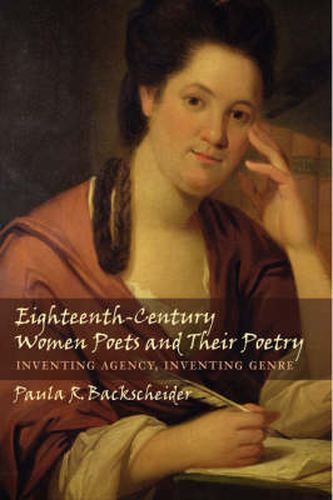Readings Newsletter
Become a Readings Member to make your shopping experience even easier.
Sign in or sign up for free!
You’re not far away from qualifying for FREE standard shipping within Australia
You’ve qualified for FREE standard shipping within Australia
The cart is loading…






This major study offers a broad view of the writing and careers of eighteenth-century women poets, casting new light on the ways in which poetry was read and enjoyed, on changing poetic tastes in British culture, and on the development of many major poetic genres and traditions. Rather than presenting a chronological survey, Paula R. Backscheider explores the forms in which women wrote and the uses to which they put those forms. Considering more than forty women in relation to canonical male writers of the same era, she concludes that women wrote in all of the genres that men did but often adapted, revised, and even created new poetic kinds from traditional forms. Backscheider demonstrates that knowledge of these women’s poetry is necessary for an accurate and nuanced literary history. Within chapters on important canonical and popular verse forms, she gives particular attention to such topics as women’s use of religious poetry to express candid ideas about patriarchy and rape; the continuing evolution and important role of the supposedly antiquarian genre of the friendship poetry; same-sex desire in elegy by women as well as by men; and the status of Charlotte Smith as a key figure of the long eighteenth century, not only as a Romantic-era poet.
$9.00 standard shipping within Australia
FREE standard shipping within Australia for orders over $100.00
Express & International shipping calculated at checkout
This major study offers a broad view of the writing and careers of eighteenth-century women poets, casting new light on the ways in which poetry was read and enjoyed, on changing poetic tastes in British culture, and on the development of many major poetic genres and traditions. Rather than presenting a chronological survey, Paula R. Backscheider explores the forms in which women wrote and the uses to which they put those forms. Considering more than forty women in relation to canonical male writers of the same era, she concludes that women wrote in all of the genres that men did but often adapted, revised, and even created new poetic kinds from traditional forms. Backscheider demonstrates that knowledge of these women’s poetry is necessary for an accurate and nuanced literary history. Within chapters on important canonical and popular verse forms, she gives particular attention to such topics as women’s use of religious poetry to express candid ideas about patriarchy and rape; the continuing evolution and important role of the supposedly antiquarian genre of the friendship poetry; same-sex desire in elegy by women as well as by men; and the status of Charlotte Smith as a key figure of the long eighteenth century, not only as a Romantic-era poet.